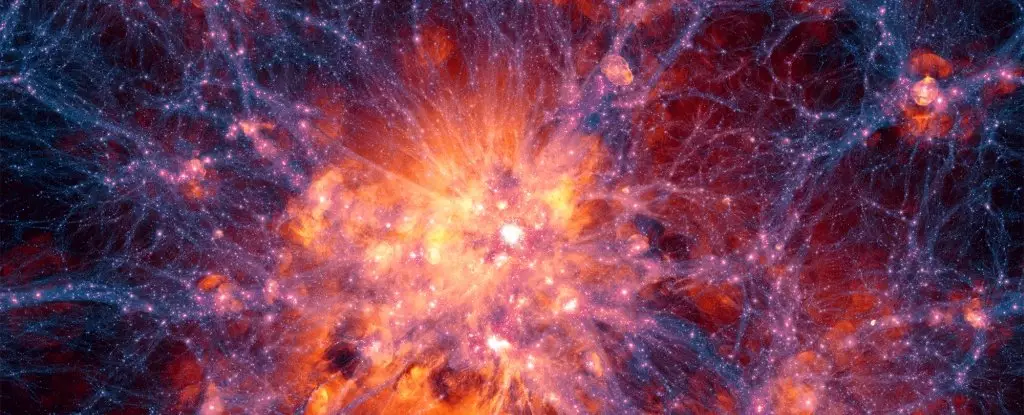Dark matter has long stood as one of the universe’s greatest mysteries—a substance that accounts for approximately 27% of the cosmos yet remains undetectable by conventional means. While scientists can measure the gravitational effects of dark matter on visible matter, the enigmatic substance itself eludes direct observation. Researchers, such as physicist Tim Fuchs and his team at the University of Southampton, are on the frontier of tackling this elusive riddle through innovative experimental techniques. As they prepare to deploy a new sensitive detector, the scientific community is keen to see what revelations may unfold.
The universe is not merely composed of the ordinary matter that scientists can visibly identify—stars, planets, and galaxies. Observations reveal a significant discrepancy between the cumulative mass of visible matter and the gravitational influence it exerts. This disparity is particularly evident when examining the rotations of galaxies; outer regions spin much faster than would be expected based solely on their visible mass. Furthermore, gravitational lensing—whereby light from distant objects is bent around massive cosmic bodies—provides additional evidence of dark matter’s dominance in terms of mass, estimated to be in a ratio of six to one compared to normal matter.
The challenges posed by dark matter are twofold: it does not interact with electromagnetic forces (which means it doesn’t emit, absorb, or reflect light), and it interacts gravitationally in ways we are still working to understand. This makes direct detection via traditional means practically impossible, compounding the mystery.
Fuchs and his colleagues have proposed an unconventional testing method that leverages microgravity to explore the effects of dark matter. Their experiment will utilize a microgravity environment to suspend sheets of graphite within a magnetic field, allowing them to detect minute forces that would indicate interactions with dark matter. Constructed to launch aboard a satellite named Jovian-1 in 2026, the experiment aims to measure how a theoretically existing “dark wind”—an influx of dark matter particles—would subtly influence the levitated graphite.
This innovative apparatus marks a significant change from Earth-based experiments, which have repeatedly failed to yield concrete results. “Our experiment is unlike anything attempted before,” states Fuchs, emphasizing the unprecedented sensitivity provided by the zero-gravity environment.
Jovian-1, comparable in size to a shoebox, will also carry several experimental projects designed by students from not just the University of Southampton, but also collaborating institutions. This venture represents a collective effort that melds cutting-edge technology with education, fostering a new generation of scientists ready to tackle one of astrophysics’ most challenging problems.
Although the launch is still a few years away, anticipation is building around the potential findings. Should the experiment register signs of dark matter interactions, it could pivot the field of astrophysics in a new direction. Conversely, even negative results could yield significant insights into the nature of dark matter and inform future research directions.
Fuchs presents an intriguing theory: that the interaction rate of dark matter may be so substantial that it is unable to penetrate Earth’s atmosphere or other terrestrial barriers, such as mountains that typically shield detectors. This could explain the lack of findings from major underground experiments, illuminating why these advanced apparatuses have thus far produced inconclusive evidence.
As researchers prepare to launch Jovian-1 into orbit, they highlight the potential collaborations between institutions and the importance of varied approaches in science. Although the task of discovering dark matter may seem overwhelming, experiments such as this signify a hope for breakthroughs.
The complex nature of dark matter research calls for relentless curiosity and innovation. The work undertaken by Fuchs and his team is not solely a quest for knowledge but an emblem of human persistence against the cosmos’s unanswered questions. Scientists continue to seek the elusive clues hidden in the universe, and while timelines may stretch, each effort paves the way for future discoveries. The next few years may reshape our understanding of dark matter—even if it remains one of the universe’s most captivating enigmas.


Leave a Reply